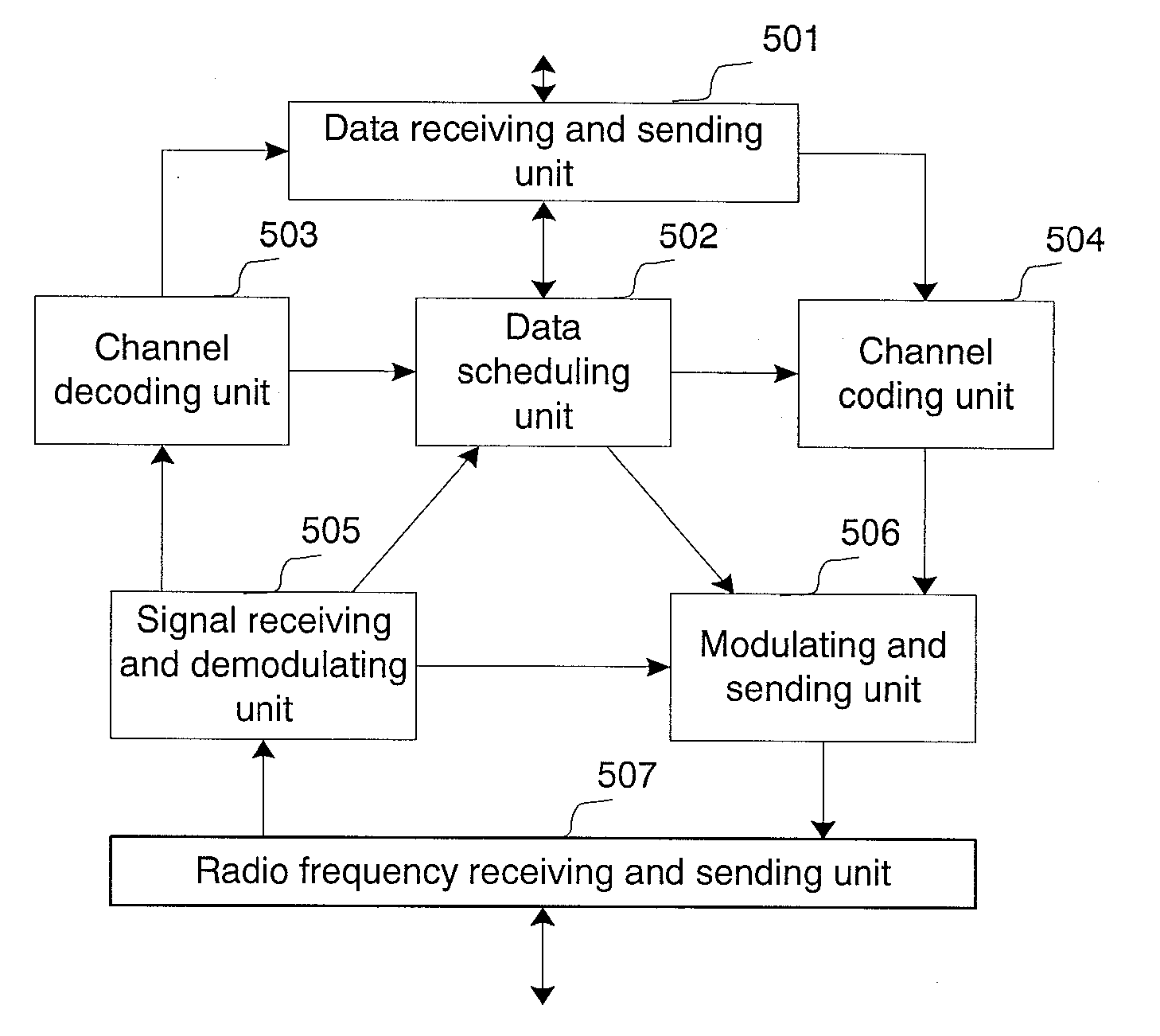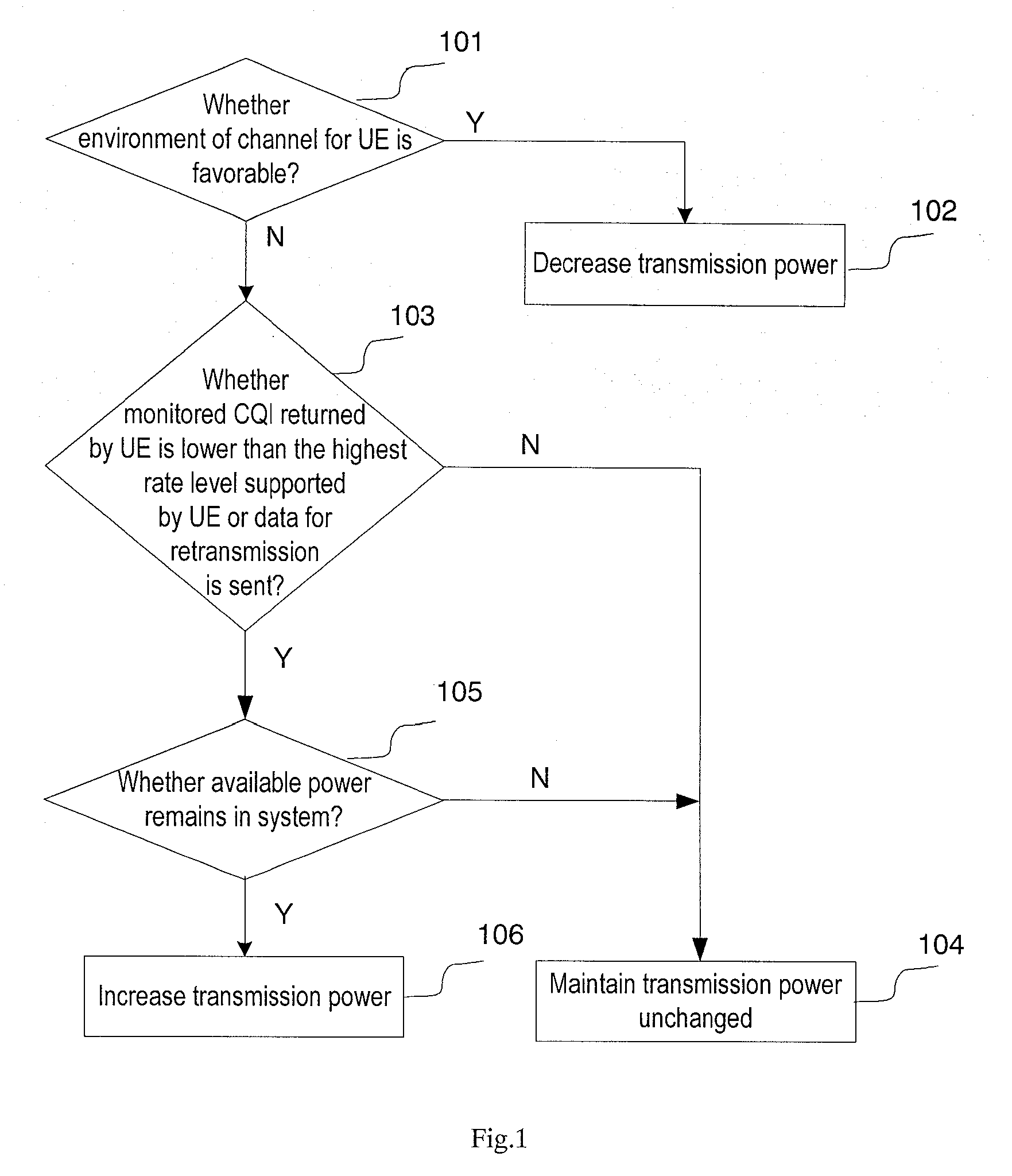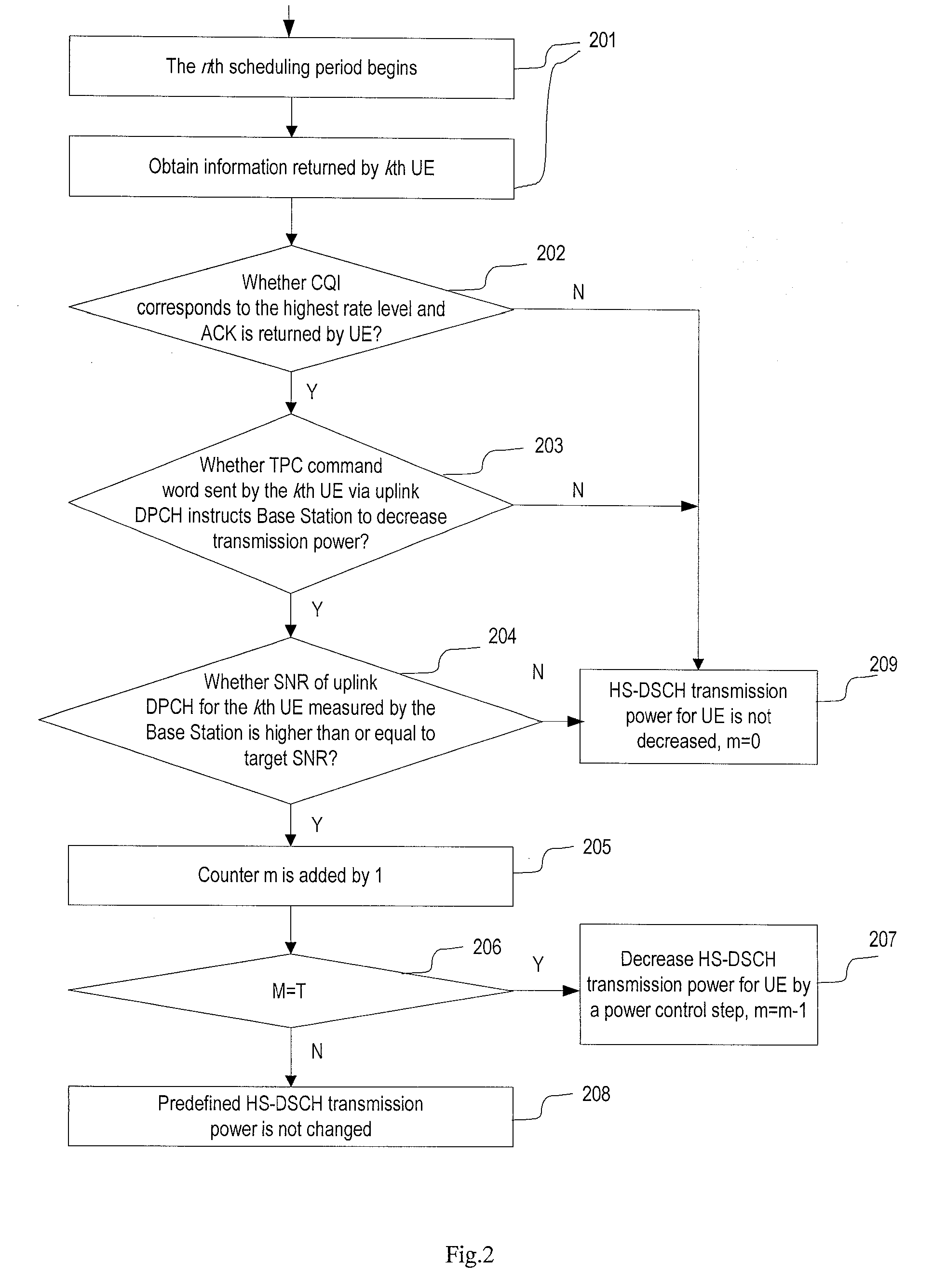Method and device for power control in hsdpa
a power control and packet access technology, applied in the field of telecommunications, can solve the problems of system interference, degraded receiving performance, and inability to perform power control in the prior art, and achieve the effects of improving the throughput of the cell, reducing intra-cell and inter-cell interference, and improving the performance of the receiver
- Summary
- Abstract
- Description
- Claims
- Application Information
AI Technical Summary
Benefits of technology
Problems solved by technology
Method used
Image
Examples
case 1
[0055] The CQI and an ACK / NACK that are returned uplink by the UE are received by a Base Station. If the CQI is always maintained at the highest rate level supported by the UE and ACKs are returned by the UE within a statistic period, the channel environment has a high quality and the transmission power may be decreased.
[0056]According to definition in the existing protocols in HSDPA, UEs are categorized based on their capabilities. In a TD-SCDMA system, fifteen categories of UEs are defined according to the highest rates supported by the UEs and sizes of internal buffers in the UEs. Various transmission block sizes corresponding to the respective transmission rate levels are defined in each category of UEs. The highest rate level of a UE means the highest service rate supported by the UE.
[0057]When accessing a network and applying for an HSDPA service, the UE reports its capability level to the network. An appropriate data volume for transmission may be selected in the scheduling a...
case 2
[0059] The Base Station continuously detects a TPC command word from an uplink DPCH that is sent by the UE. If the TPC command word continuously instructs the Base Station to decrease the transmission power within a statistic period, it is meant that the channel environment for the UE has a high quality and the UE may be approaching the Base Station, and the transmission power of the HS-DSCH may be lowered according to the power control on the DPCH.
[0060]During the communication between the UE and the network, downlink power control and uplink power control may be performed in the system to ensure air interface communication quality and ensure that receiving SNRs of the uplink and downlink links are close to the target SNRs. In the downlink power control, the UE receives downlink data and measures the downlink link, compares a measured result with the target SNR, and then generates a downlink TPC command word to control the Base Station to increase or decrease the downlink transmiss...
case 3
[0062] The uplink DPCH or control channel for the UE is measured. Within a certain statistic period, it is indicated that the environment of the channel for the UE has a high quality if the SNRs of the channel are higher than target SNR of the channel, and the transmission power of the HS-DSCH may be lowered. The SNR comparison and the statistic period are same as those in case 2 and are not described.
[0063]Further, the statistic period in the invention, which is not a constant value, is determined based on simulations and measurements, taking algorithm performance into consideration. In practice, the power control is performed in each sub-frame. The power control result according to a TPC command word based on only one sub-frame may be inaccurate due to frequent changes in the channel environment, and therefore a regressive average method is generally used in the power control algorithm. In other words, the next power control operation of increasing or decreasing the transmission p...
PUM
 Login to View More
Login to View More Abstract
Description
Claims
Application Information
 Login to View More
Login to View More - R&D
- Intellectual Property
- Life Sciences
- Materials
- Tech Scout
- Unparalleled Data Quality
- Higher Quality Content
- 60% Fewer Hallucinations
Browse by: Latest US Patents, China's latest patents, Technical Efficacy Thesaurus, Application Domain, Technology Topic, Popular Technical Reports.
© 2025 PatSnap. All rights reserved.Legal|Privacy policy|Modern Slavery Act Transparency Statement|Sitemap|About US| Contact US: help@patsnap.com



